User experience (UX) has become a top parameter of success for web-savvy brands. The kind of UX a branded website provides literally decides its fate.
Think I’m exaggerating?
PwC found that 32% of customers abandon a brand they love after having just one bad experience with them.
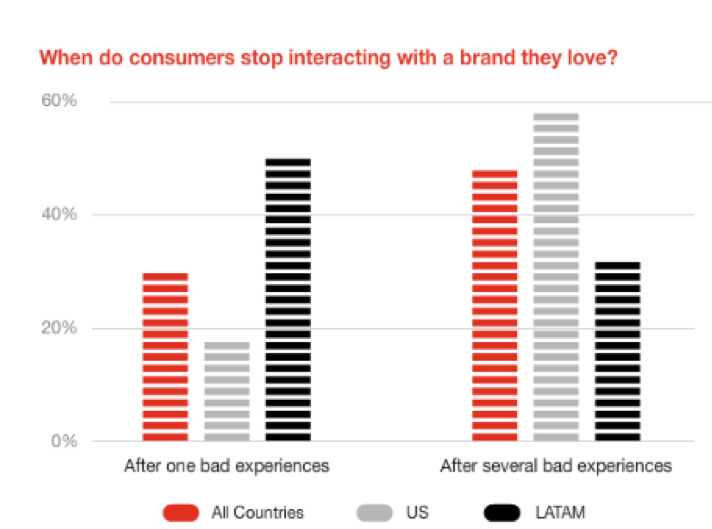
Image via PwC
That’s a prime reason why 81% of companies are battling it out just on the basis of UX. With comparable products and services, brands are focused on providing remarkable UX to draw more customers.
For ecommerce vendors, the challenge is even bigger. They are competing not just amongst themselves to offer frictionless shopping experience, but also with local stores.
To retain and convert click-happy shoppers, ecommerce brands are doing everything in their power. And this includes using visual content well in their customer-facing assets.
Visuals have long been the holy grail of digital marketing. In fact, 49% of marketers in 2019 considered visuals as “very important” to their overall marketing plans.
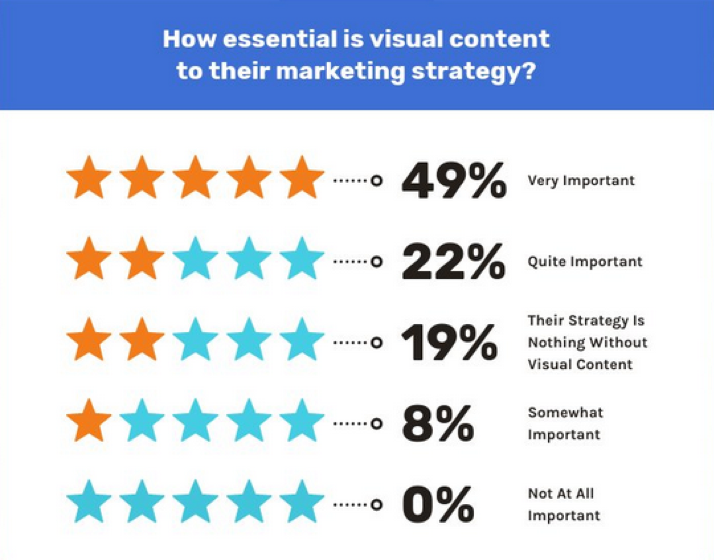
Image via Social Media Examiner
That’s because visuals serve multiple purposes. They not only beautify ecommerce websites but also make their UX more seamless.
If you need clarity on how visuals can boost your site’s UX, read this post carefully. I’ll explain with illustrations how major ecommerce players are leveraging visuals to delight their shoppers.
Let’s get started.
4 Ways to Enhance Your Ecommerce UX Using Visuals
Smart entrepreneurs include visuals in their marketing plans from the time they start an ecommerce business. If you’re behind the curve, you may have lost more than a few leads to visual-savvy competitors.
However, with the four strategies I’ve explained below, you can gain lost ground in no time.
1. Use Visuals to Make Your Website Appealing
First impressions matter.
It’s a harsh fact, but true.
And it holds true for ecommerce websites as well. Google’s research proves that 94% of people judge websites that they visit solely on the basis of aesthetics.
This means that if your ecommerce website has low visual appeal or poor design, it is bound to drive away visitors.
Why, you ask?
Visuals have a sustaining impact on the human mind. People respond better to visuals than to text, audio, and kinesthetic messages. That’s why websites with more visual content engage visitors better and longer.
If your website is low on visual content, here’s what you need to do:
Instead of overhauling your complete site’s design in one go, start optimizing the visual quotient page-by-page.
You can use web analytics platforms to identify pages with high bounce rates. Compare them with the corresponding product pages of your competitors. Pick the visual elements that your pages lack and start by building those.
Selecting the right visual format for your site is crucial. GIFs, videos, stock images, and infographics are the commonly-used formats. But you can’t use them interchangeably. Pick a format that depicts your content in the best light.
You can take a cue from Etsy’s website. Their product pages contain high-definition imagery that can be rotated at different angles. Product reviews include customer-generated pictures, which look authentic as well as eye-catching. Instead of chunky textual blocks, they use icons as visual cues.
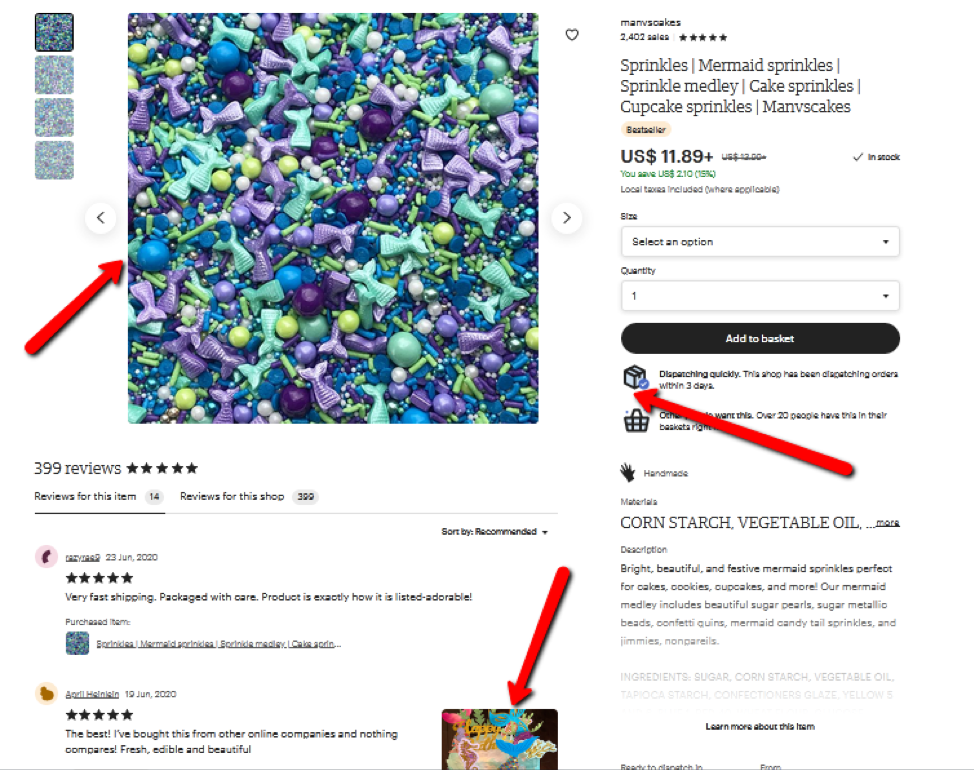
Image via Etsy
2. Include Visuals in Your Social Feeds
For ecommerce companies, social media marketing is a must.
Brands with a strong social media presence can actually drive purchase decisions of 73% of consumers. Apart from that, sharing user-generated content on social platforms builds customer trust, which, in turn, generates new leads.
Nothing new, right?
But do you know that visual content is super-successful on social media? It engages users and gets shared much more than plain text posts.
If you ask me what is the best content to share on social media, I have to say videos. Social media users enjoy the multi-dimensional experience provided by videos.
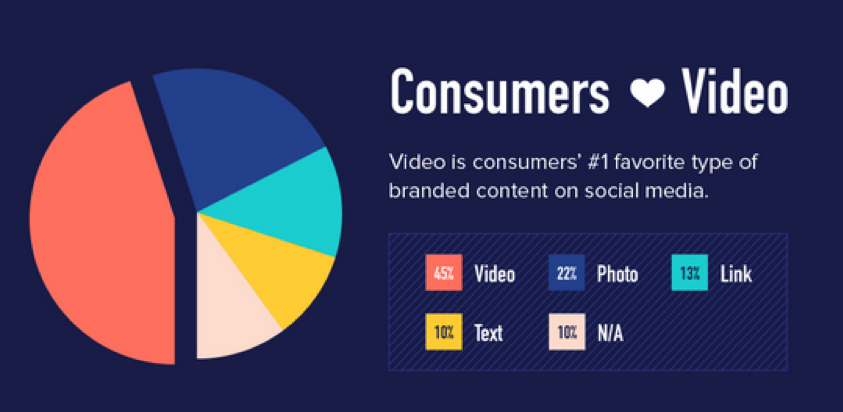
Image via Animoto
Ecommerce brands can craft a variety of engaging videos, ranging from video testimonials to product tutorials. Unboxing videos from customers inspire trust from audiences and helps in winning potential clients.
You can also host video Q&A sessions to connect with your customers and solve their queries. All of this improves customer satisfaction rates which can lock in customer loyalty for the long term.
Need a pro tip?
If you’re boggled by the wide choice of visual content options for your social feeds, use social media tools. These tools can help you identify content types that are grabbing maximum eyeballs on platforms that you want to target. They can also schedule and post your visual content at optimal times.
3. Use Visuals in Brand Storytelling
Ecommerce brands need to build connections with their customers. They need to go beyond product catalogs in order to carve a place in the hearts and minds of consumers.
But how?
Brand storytelling is an effective way to humanize your ecommerce brand. You can use video stories to articulate your personal journey and your brand’s mission. They are more palatable than text-heavy “About Us” pages that people rarely visit.
If your stories are compelling, you can drive customers to engage with your brand, including your paid ads.
Don’t believe me?
OneSpot research revealed that 92% of people want brands to create story-like ads. This means they are amenable to click on ads if they find their stories impactful. With shoppers becoming more discerning day by day, this will be a huge win for any ecommerce brand.
Airbnb has some of the best digital marketing campaigns and they all pivot around storytelling. Since the brand believes in “experiential travel,” their love for stories is natural. What’s striking is the kind of emotions that their stories evoke in travelers.

Image via SlideShare
Inspired by the brand’s storytelling, their hosts and customers also share stories on Airbnb’s official website and social pages. This helps attract potential customers who aspire to tread the “unbeaten path.”
4. Keep Your Visuals Mobile-Friendly
Last but not least, visuals help ecommerce brands enhance their mobility.
You will be surprised to know that 54% of all mobile brand experiences originate from videos or images.
A huge proportion of online shoppers use mobile devices for product discovery, comparison, and research. If they see sloppy images or sluggish videos on your ecommerce site, they will be only too happy to leave your site and head to a competitor.
If you want to provide a true omni-channel experience to your shoppers, design your visuals for mobile devices. Your visuals should render well on small screens so that your customers’ shopping experiences are seamless and pleasant.
The optimization of visuals is a key ingredient of m-commerce. Create mobile-friendly visuals by compressing rich media so that they load fast. A/B testing of different designs on different devices is also important. You can also use Google’s Mobile-Friendly Test.
Need an example?
Apparel brand, Threadless’ website is a treat to visit for mobile users. The bright visuals are neatly placed in a grid layout. Prices and offers are prominently displayed as animated icons that immediately catch the eye.
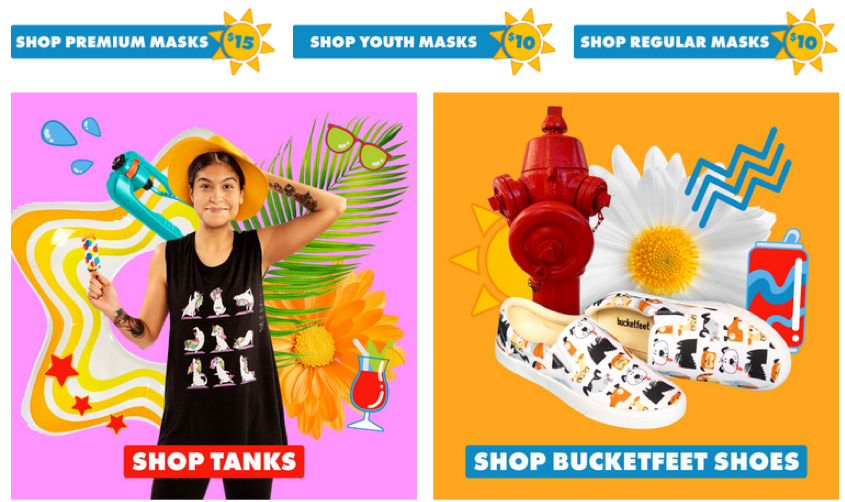
Image via Threadless
Threadless understands this. Once a user clicks on a product on their site, all of the color/design options line up below so that users don’t have to go to individual product pages to hunt for the items they want.
Intuitive features like these improve ecommerce sites’ mobility and shoppers’ experience.
Are You Ready to Unleash the Power of Visuals?
Ecommerce brands live in a competitive ecosystem where customers are king. Visual content engages and delights customers in a big way. Needless to say, engaged visitors convert faster. The tips in this post can help you win customers and beat the competition by leveraging visual content.
Do you need more tips to grow your ecommerce brand? Write your questions in the comments below. I will be happy to answer.
